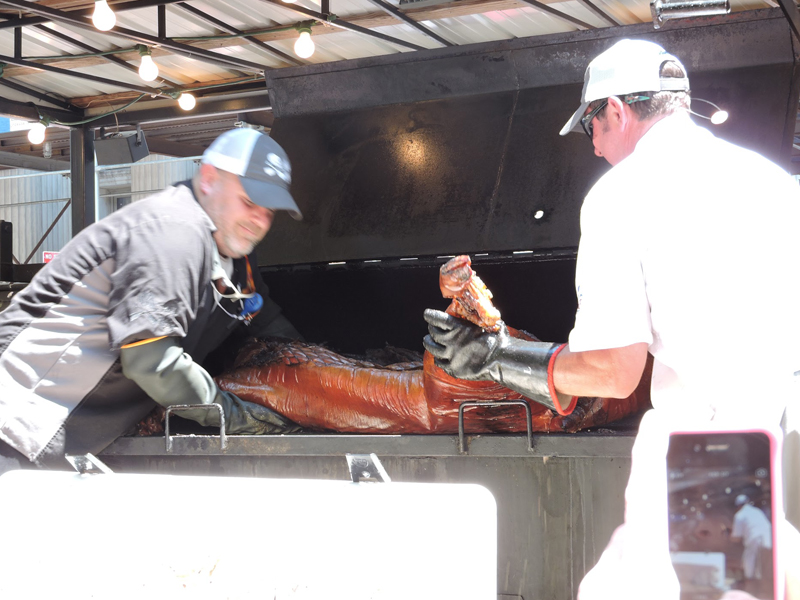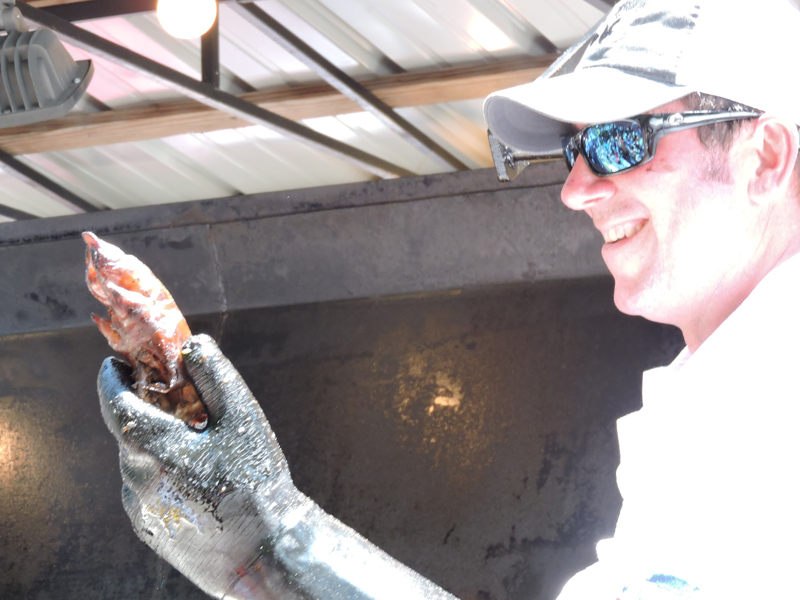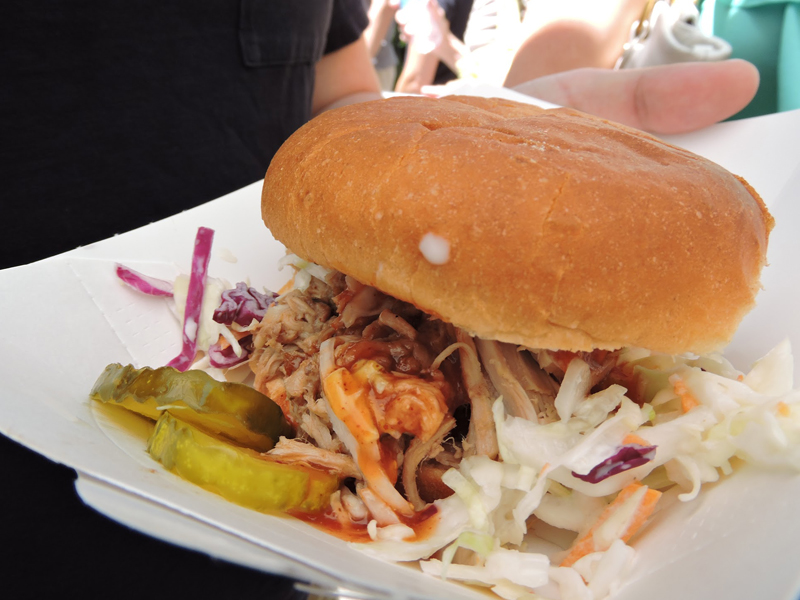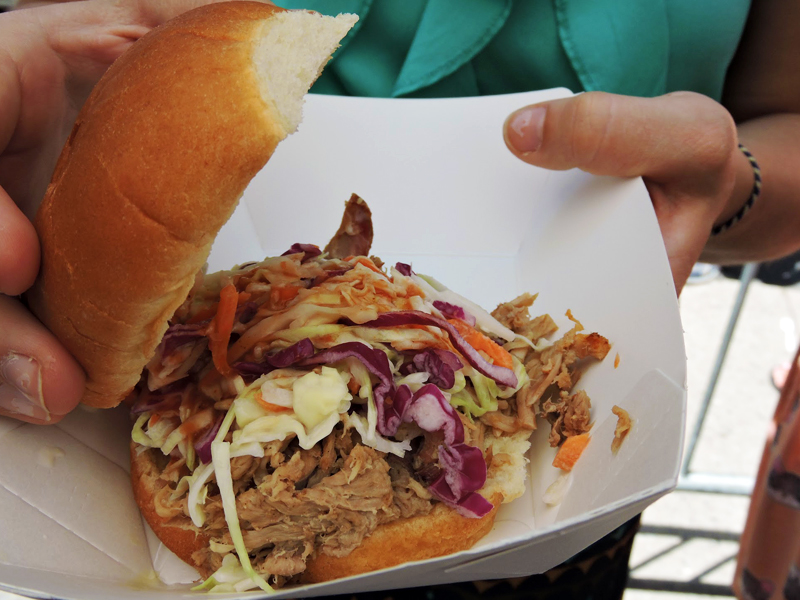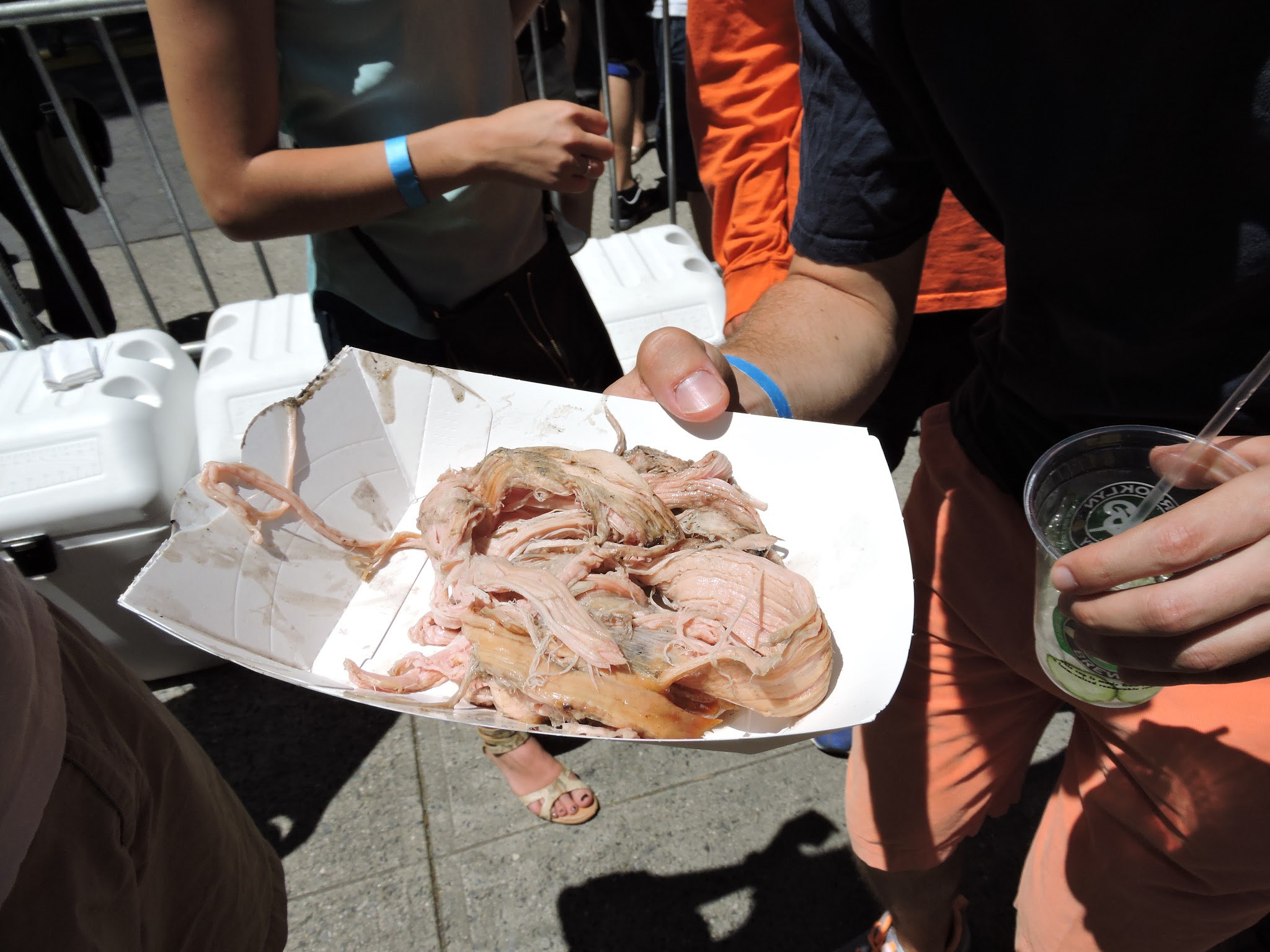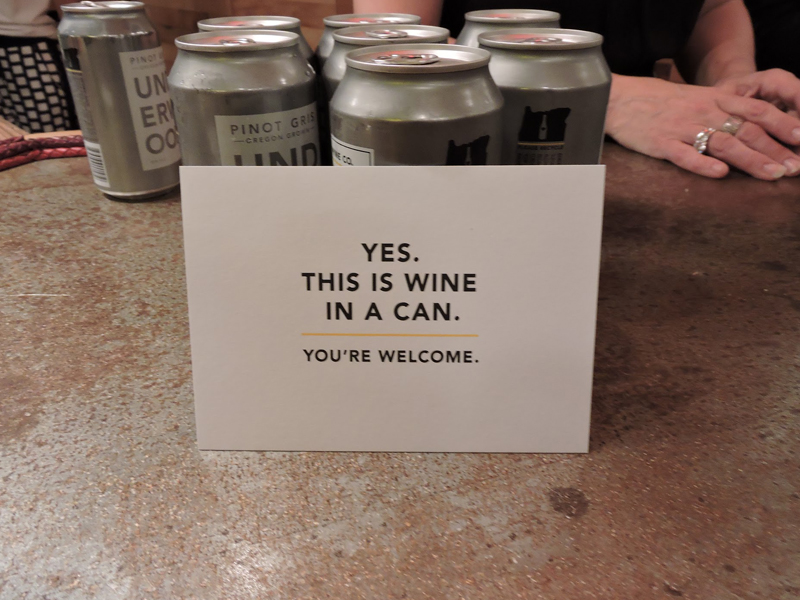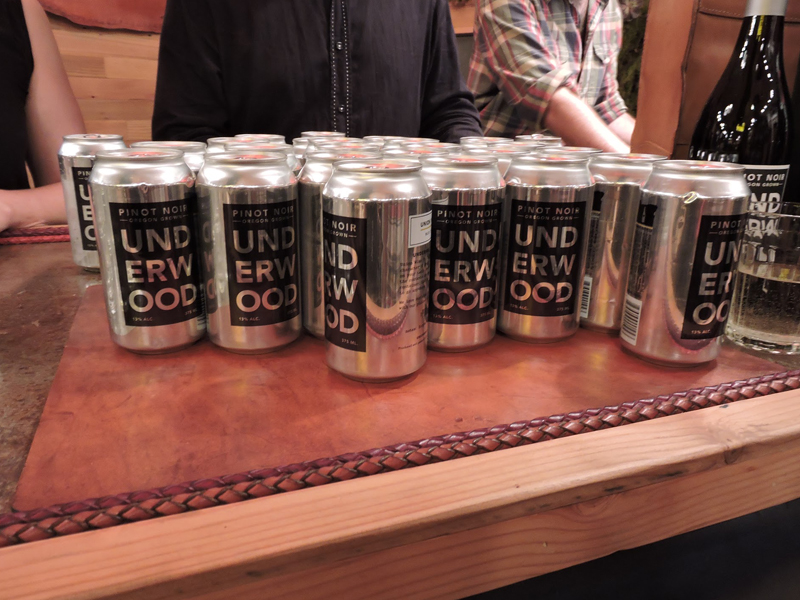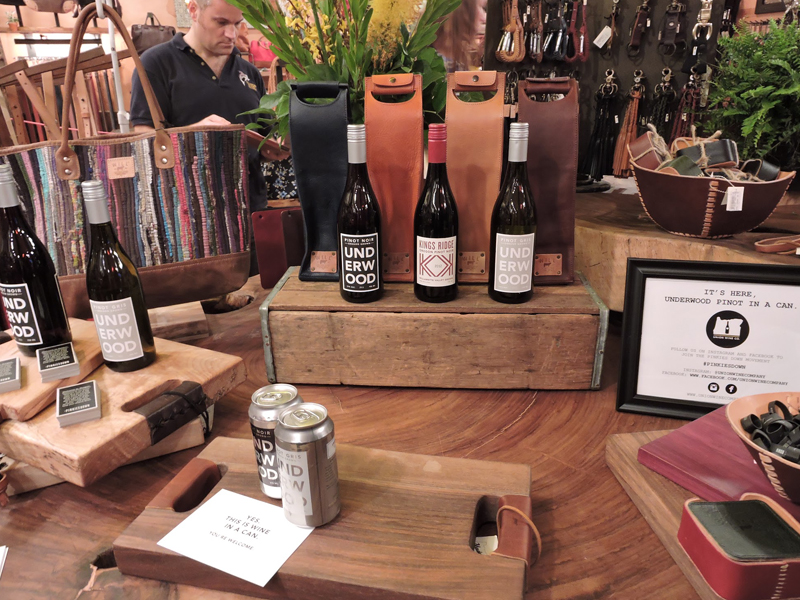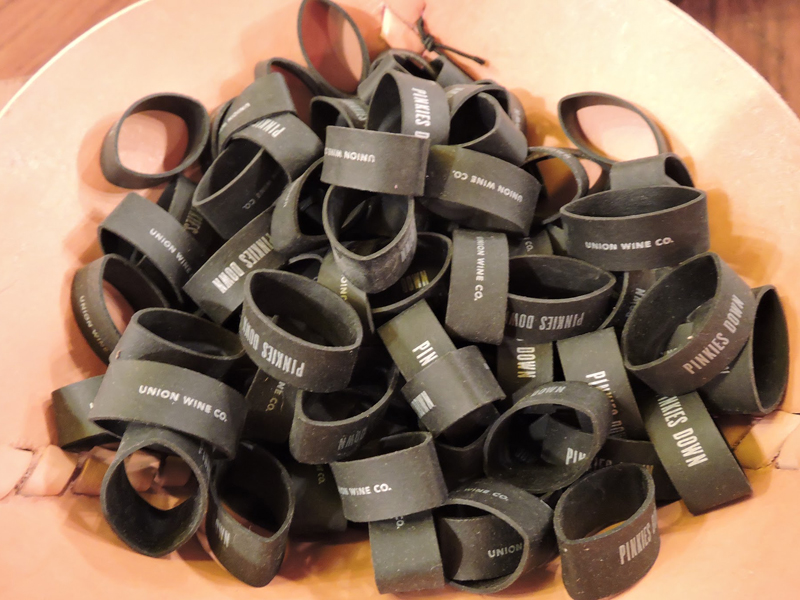Little did I know at the beginning of last week that I would not only get to experience two incredibly fun events over the next few days, but that they would be the perfect inspiration for today’s post: a BBQ fest and a wine launch party.
Now as a vegetarian, the last place one can usually expect to find me is at a (mostly) Southern BBQ Festival in NYC, particularly at a booth famous for their “whole hog.” But when you’re married to a good ole’ boy from Alabama and that boy comes with a family of BBQ-lovin’ individuals, you sometimes find yourself in surprising situations. Which brings me to the Big Apple Barbecue Block Party in NYC and specifically to Martin’s BBQ Joint.
Each year, we join some family who help Pat Martin, the proprietor of his eponymous BBQ joint, on their annual pilgrimage to NYC and join in the festivities. We sit and enjoy the scene, catching up with fine folks who we haven’t seen in a year and gaze at on-lookers who marvel as each of the twelve (!) hogs are carried out of the portable smoker (they’ve been in there for 22 hours).
As I mentioned before, I’m a vegetarian, so eating hog is not number one on my list of things to do; however, watching the lines form around the block for a taste of this slow-cooked meat, I know this is one of the best places to have a taste of true Southern BBQ. So what’s a girl to do as she munches on her veggies as others delight in the smoked meats? Drink. But this year, I wasn’t in the mood for beer and found myself wondering what other options would fit into this scene that wouldn’t make me stand out like a sore thumb. Conveniently, only several days prior I attended the launch party for a wine I had written about several months ago: Underwood wine in a can.
On Wednesday night I joined a lucky bunch as we gathered together at Will Leather Goods store in NYC to toast the launch of Underwood “Pinot in a Can” produced by Oregon winery Union Wine Co. While there, the VinePair team got a chance to have a quick chat with the winemaker, Ryan Harms, about the impetus for his decision to bring wine in a can to market, what he calls the “beerification of wine” (not to be confused with “winification of beer”), and the benefits of such a vehicle for our beverage of choice.
Based in Oregon, Harms and his team were constantly reminded by their outdoorsy friends how difficult it was to carry wine along for a backcountry ski trip and the challenges of resupplying wine while out in the wilderness, which got them thinking: wouldn’t it be great if wine came in a can? And as they say, an idea just needs the right place and right time to see the light of day, and luckily for Union, that place and time would present itself. With the Bon Appetit Feast Portland festival just around the corner, Union wanted to dream up an interesting product to showcase at the event and what could be more interesting than the wine in a can idea? Plus, with more and more Americans consuming wine, it’s a logical move to think about how many Americans like to consume what’s still the most popular beverage in America: beer. Thus the idea of the beerification of wine. (It must be noted though that preferences are beginning to change.)
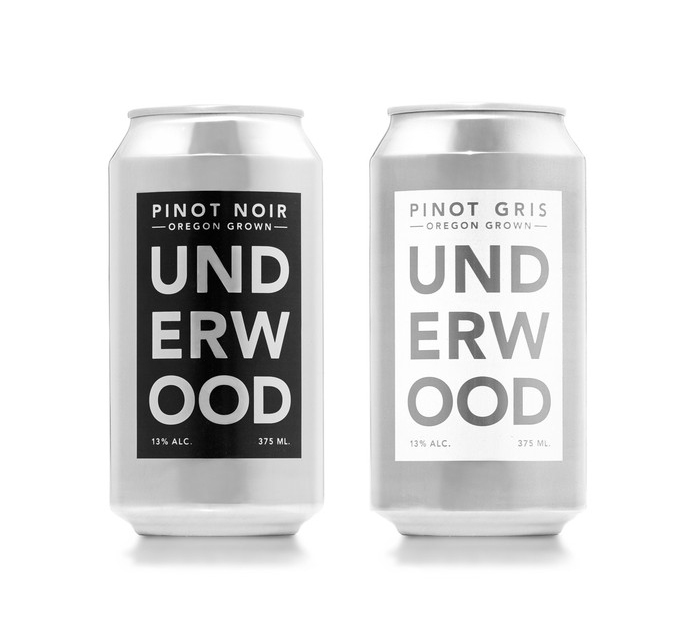 Union’s next move was to develop a prototype for the wine and as Feast buzzed in excitement for their idea they realized they were onto something and the next step would be to create a full-scale operation to produce wine in a can and bring it to market. Now we know you’re skeptical. Wine in can? Won’t the aluminum affect the taste of the wine? How much oxygen can enter a can? Can it age?
Union’s next move was to develop a prototype for the wine and as Feast buzzed in excitement for their idea they realized they were onto something and the next step would be to create a full-scale operation to produce wine in a can and bring it to market. Now we know you’re skeptical. Wine in can? Won’t the aluminum affect the taste of the wine? How much oxygen can enter a can? Can it age?
As Harms explained during our conversation, all aluminum cans have a liner inside that separates the product from the aluminum itself, thereby not affecting the taste of the wine inside. Further, and interestingly, while some oxygen seeps in during “bottling” (or should we say “canning”), the can itself is more air tight than bottles closed with a screw cap! And since the liquid inside is not carbonated, liquid nitrogen provides the can with internal pressure.
Our next question was how much wine could fit in the can. Was this your standard size soda can or was this something different? The answer: this was something different. Standard soda cans in the US hold 355 ml, while the Underwood can holds 375 ml, which means each can contains half the wine of a standard wine bottle, so about 2.5 glasses of wine per can.
Our final question had to do with aging. Is this a wine that could age or should it be drunk right away (we had our suspicions). Harms explained that this is a wine the consumer should drink right away. It’s a food-driven wine, like the rest of the Union line, and meant to be consumed within a shorter period of time.
Now we know you’re intrigued and wondering where you can buy the wine in a can. Currently, only 5% of the Underwood Wine that Union is producing is going into a can so supplies are a bit limited. That said, until you can find the cans in your local wine shop, you can visit their online store to purchase four-packs.
And so we fast-forward three days back to the Big Apple Barbecue festival where I sit enjoying the amazing company, atmosphere, and sipping on my beverage of choice while also fitting in with the crowd. A great way to kick off the beginning of what’s definitely going to be wonderful summer! As you plan your own summer events, be sure to keep a package of Underwood Wine in a Can in your fridge not only for outdoorsy adventures, but also for lounging at BBQs, enjoying sporting events, and just relaxing in your backyard. But don’t forget: #PinkiesDown.
Finally, I’d be remiss if I didn’t end this post with one my favorite parts of the festival in which we all head on over to Eleven Madison Park for a party hosted by Old Rip Van Winkle Distillery and to hear The Crooners jam out surrounded by a fun-loving, and, needless to say, tipsy, crowd:
[Note: We weren’t able to capture our own video of The Crooners in action, but we found this great video of them performing at the same event in 2011]

